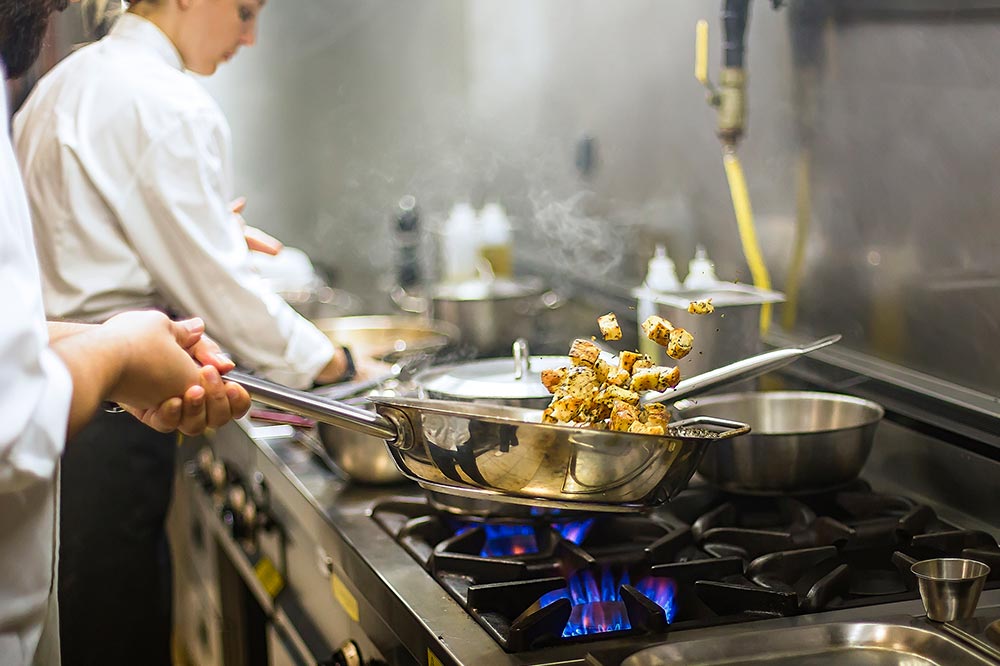When it comes to reducing restaurant labor costs, often the focus becomes on retention. And yes, retention is huge for the restaurant industry because of the high turnover rates and how that affects your bottom line.
But if you’re serious about lowering your restaurant’s labor costs, an equal focus needs to be placed on efficiency within your operations. Here are five places to streamline operations and improve labor costs in the process:
Review your employee policies.
Believe it or not, a hidden contributor to high labor costs could be employees cutting corners. Do some of your employees take extra-long breaks? Do those employees conveniently avoid side work?
You might need to look at your employee policies.
See what can be made more specific in your employee handbook and nail down real consequences for those who break the rules. Having a POS system that records employee hours will also help you keep up on monitoring lost time and address key duties being overlooked.
While stricter policies can seem like a morale killer at first glance, ultimately employees thrive on structure, not vagueness. You’re also making sure all employees are on equal footing and doing their fair share. If your more diligent staff members keep seeing peers taking extra breaks and skimping on side work, that’s what’s really going to bring morale down — and may even ultimately cost you an employee or two.

Revise your server section chart.
Think about how many (or how few) tables you’re splitting between each server in any given shift. You could be creating pockets of underused seating, overstaffing for the sections that don’t get used often during slower shifts.
Overstaffing balloons your labor costs, but it also means the server who isn’t being assigned to the busy tables won’t be able to get strong tips that shift.
Also, adding a station at the dining room where you can organize extra silverware, napkins, small plates, etc., allows your front of house staff to easily access extra supplies without having to run all the way to the kitchen. This will improve overall service for your guests, as well as improve labor costs through efficiency.
Consider your kitchen’s layout as well. If you can put corresponding stations next to each other (and cross-train your cooks for those stations), you can let one person handle both stations for the slower shifts. Just make sure said shift is slow enough to allow that cook to do both tasks at once.
Optimize your space.
Is your dining room and bar the most efficient it could be? Inefficient seating charts can make your servers’ lives much harder as they try to navigate awkward paths to and from the kitchen. Slowing down servers and bussers with awkward dining room flow could make you think you need to staff more employees per shift, but a simple reevaluation on your seating placement can do wonders for efficiency.
The same thing applies to the kitchen. While many parts of your kitchen can’t be moved without major renovations, look to see if there are any movable stations that make more sense switched with each other.

Invest in effective equipment.
If your staff doesn’t have the right tools, they won’t be able to do their jobs efficiently.
Whether it’s getting a mandoline for your produce prep-work, upgrading your POS system to run smoother transactions, or replacing your constantly failing older oven, you’re giving your employees what they need to be efficient. This will help not only get dishes right the first time and give the guests better experiences, but will also relieve a lot of headaches for your staff, and keeps their effort optimized for you.
Similarly, make sure you’ve organized your walk-in in a way that makes sense for everyone. Your back-of-the-house staff shouldn’t have to spend five minutes in the walk-in trying to figure out where someone put the eggs. Group ingredients together (while still avoiding cross-contamination) and keep that organization consistent so your employees can quickly grab what they need every time they walk into the walk-in.
If a particular item is used very frequently in a particular location, consider smaller refrigeration units on or near the line to store those must-grab items.
Evaluate your menu.
For many restaurateurs, there’s this instinct to build up a huge menu, pulling in a wide variety of items for their guests. After all, you want to provide your customers with as many options as possible so they’ll be completely happy with their choice, right?
Unfortunately, that tactic can actually hurt your business more than it helps. Giant restaurant menus slow down the ordering process, adding more touchpoints for your servers, and reduce the amount of tableturns you can get through in a shift. All of that costs you hard money at the end of a shift.
A huge menu is also a strain on your back-of-house staff. If your menu features many many different items, it takes extra training for your kitchen staff to learn each and every recipe. It also creates a situation where you have to have more kitchen staff on duty just to execute the large menu well.
As a matter of efficiency for both servers and cooks alike, trim down your menu to a reasonable size with items that make sense on the same menu. It’s a great first start to improve your labor costs by making your staff more efficient.
Want more ideas for how to improve labor costs in your hiring process? Download our free eBook “How to Hire the Perfect Restaurant Employees” today:






